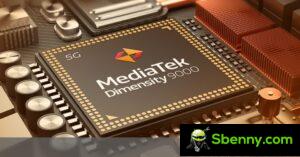In 2004, Amazon CEO Jeff Bezos created a team to build an ebook reader: in 2007, the Kindle was born and has continued to dominate its market. Then, in 2011, the Kindle Fire Android tablet arrived, and while it failed to reach the same dominance, it has become a major player in its niche. What was next?
An Android phone, but not one that owes a debt to Google. At the end of July 2014 Amazon introduced the Fire Phone. It ran Fire OS, the company’s fork of Android that has been reworked to fit into the Amazon ecosystem just like Kindle readers and Fire tablets were.
By that we mean Kindles were selling books (Amazon’s original business), Fire tablets were selling books and streaming. What was the Fire Phone supposed to sell? Everything. Let’s go back and start over.




The Amazon Fire phone
An Amazon phone has been a rumor since around 2010. A lot was said early on, like how it would be free with an Amazon Prime membership. In reality, things went differently.
The phone was officially announced on June 18, 2014. It was an AT&T exclusive (like a certain influential smartphone before it) and while it wasn’t free, it cost $200 with a 2-year contract. Out of contract it was $650.
It was expensive — it was iPhone 6 money — but it was a unique phone and it came with perks like a free year of Amazon Prime. That was nothing, 2014 is when the cost of Prime jumped from the original $80 to $100. We’ll talk more about the price in a bit, first let’s focus on what exactly people would buy with their $200/$650.
The distinguishing feature of the Fire Phone was an array of four IR cameras, each with a wide-angle (120°) lens and an IR illuminator. The data from these was fed into a custom low-power processor, which accurately tracked your face.

This allowed the software to create a 3D effect, rendering things as they would appear from your perspective. There have been phones with 3D displays before, but those used an autostereoscopic type of display — you could only see the effect from one particular perspective. The Fire Phone could create a 3D view from any perspective and without losing resolution (like an autostereoscopic display would).
The display was a regular 4.7-inch IPS LCD with a resolution of 720p, quite low considering Androids had already switched to 1080p. It was guarded by the actual Gorilla Glass 3.
The so-called dynamic perspective was used to add some spice to the user interface, but it had other applications as well. Remember those lenticular cards that created a short animation as you tilted them left and right? The Dynamic Perspective feature was used to recreate this effect and create a moving image from your photos.
By the way, the Fire Phone came with a 13MP camera on the back. It had OIS, an LED flash, and could record 1080p video at 30fps. It was a regular camera – no magic here, at least not in terms of hardware.

Remember the Fire Phone was supposed to sell everything? That’s where Firefly comes in: This app (also a built-in feature in the camera app) was like a Buy button in your pocket. It might scan an item and take you to an Amazon page that sells the thing.
It could scan product barcodes, of course, but it wasn’t flashy technology. It used image recognition to figure out the brand name of, say, a box of crayons and add it to your shopping list.

There were other uses too, like recognizing songs and TV shows and movies, coincidentally things that Amazon sells. It could also scan a phone number or email and add it to your address book too, in case someone handed you a business card.
One really useful thing used to be called MayDay, a 24/7 support service. This wasn’t an AI thing either, tap the icon and you get a real human being on the other side, ready to help you . Service like that would be great for a phone for less tech-savvy relatives who normally annoy you whenever something needs fixing.

The Fire Phone has also been integrated with the rest of Amazon, not just the store. For example, photos were backed up to Amazon Cloud Drive, which offered unlimited storage for Fire Phone owners. Unfortunately, like Google’s unlimited storage offer, the dream didn’t last (we’re getting there).

The phone ran Android, technically Fire OS 3.5 based on Android 4.2 Jelly Bean, but didn’t use Google Play. Instead, the Amazon Appstore was the primary source of apps. There was also Amazon Video, Amazon Music and Audible, the Amazon Silk browser – an almost complete replacement for the Google ecosystem. Some holes were filled with third-party apps, although they still supported dynamic perspective. For example, users can use HERE Maps and tilt the phone to gape at 3D buildings.

While not as well-stocked as Google’s store, the Amazon Appstore is the biggest alternative — there’s a reason Microsoft chose it as the default Android store for Windows 11.

All of these apps ran on a Snapdragon 800 chip with 2GB of RAM and 32GB of storage in the base configuration (with a 64GB option). There was no microSD slot, which was disappointing since Fire tablets have it.
The 4.7-inch HD phone wasn’t anything fancy, but at least Amazon has equipped the phone with stereo speakers for a better experience when streaming videos and music. However, the 2,400mAh battery didn’t hold much charge for long streaming sessions.

Ok, now we can finally get back to the price. As a reminder, at launch the Amazon Fire Phone cost $200 with a 2-year AT&T contract, or $650 without. A month and a half later these prices were reduced to $1 on contract and $450 on contract. By November an unlocked phone was down to just $200 (still with a free year of Prime).
A few price drops later, Amazon officially pulled the plug: In August 2015, just over a year after the announcement, the phone was listed as “Not Available” on Amazon.com.
What went wrong? The obvious problem is the price. Fire tablets are some of the cheapest slates you can buy, always have been. No pizzaz, no gimmicks, just cheap hardware subsidized by Amazon sales. The Fire Phone was different, however, it spent money on the impressive but mostly gimmicky dynamic perspective system.
As a smartphone for everyday use, the Fire was hit for its low-resolution display, thick bezels, and operating system that wasn’t ready to power a flagship phone and more.
Between the failure of the Fire Phone and last week’s Nokia X phones you might think a successful non-Google Android phone is impossible. And that may be true, but we think the Nokia X series was closer to the correct price than the Fire Phone. After all, you could just buy a Samsung Galaxy S5 and install all of Amazon’s apps. They would lose Dynamic Perspective, but the novelty of that wouldn’t last long anyway.
The Fire Phone launched in July 2014, and an August report estimated only 26,000 units had been sold. This was significantly less than something like the LG G3, not to mention the iPhone, which had people lining the streets to get one on launch day. Amazon has expanded into new markets, teaming up with O2 in the UK (£0 upfront, £33 a month) and Deutsche Telekom in Germany (€1 upfront, €45 a month), but it wasn’t enough to turn the tide. situation.

In October of the same year, Amazon posted losses of $437 million, of which $170 million attributed to the Fire Phone. That wasn’t the only reason Amazon lost money, but the company didn’t want to keep it around much longer and that’s why they started slashing the price.
Kindle ebook readers still dominate the market, Fire tablets are the focus of every Prime Day. There are also Fire Sticks and Alexa-powered speakers. But Amazon never made another phone.







Start a new Thread